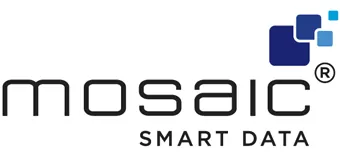Key challenges
Data fragmentation
Many of the participating institutions found that they struggled with data fragmentation, with multiple data sources and reports being generated across the front office. This can produce inefficiencies and may lead to data inconsistencies across different reports or teams. On average 5-10 data sources need to be joined to get the full picture.
Data fragmentation also includes front-end visualisation, with the average number of systems being used by front office participants adding up to circa 2-3 to deliver all the information they need at any given point in time. These disparate front-end systems usually have multiple pages to navigate, which also adds to the complexity of accessing data.
Voice data
This is often the most persistent and pervasive data challenge for institutions. There are two main challenges seen in collecting and managing voice data:
- Missed voice trades: most institutions do not capture missed voice inquiry data, largely because they do not have a proper implementation of a sales-to-trader (STW) ticketing system to systematically capture the client → sales → trader workflow.
- Bloomberg chats – messages contain useful trade/inquiry data but the constraint is that the messages contain unstructured data which can be challenging to draw insights from. Getting useful transactional data from Bloomberg chat can be complex and there aren’t many successful and efficient technologies in the market for this.
Instrument static data (average based on Mosaic clients’ data)
- Interest Rate Swaps (IRS)
On average, IRS account for roughly 6% of the total flow and 35% of the total notional. However, Mosaic Smart Data highlighted that in more than 50% of the transactions there was at least one of the following dimensions missing from source data:
- Delta / DV01 (i.e. Dollar Value of 1 bp, which is the key interest risk measure for interest rate swaps)
- Floating rate index
- Interest rate payment frequency
- Interest rate payment day count convention
These are significant gaps as the lack of information of the traded Interest Rate Swap (e.g., floating leg index) prevents access to any insightful and risk-based (e.g. DV01) analytics on IRS flows.
- Credit Redeemable Bonds
Redeemable Bonds (also known as Callable or Puttable bonds, depending on the optionality embedded in the security) account for an increasing percentage of the bonds issued today in the Credit market. Thus, they account for a greater and greater portion of the revenue of the investment bank. Based on a Mosaic Smart Data analysis, on average Callable Bonds account for almost 50% of the Credit transactions and this sums up to a combined average notional of about 50% of the overall flow.
However, missing or incomplete Callable Bond data is a significant gap in getting risk-based metrics to help maximise a business’ portfolio potential. Specifically, there are widespread issues with capturing in a systematic way:
- List of the Redemption dates of the callable/puttable bonds
- Redemption price of the callable/puttable bonds
- Yield to worst of the callable/puttable bonds
These data gaps have a significant impact of the risk profiling of the callable/puttable bonds, and therefore in the ability of the investment banks to internalise and/or affect the risk in a cost-effective way.
Counterparty static data
This is one of the biggest challenges and pain points for most institutions when it comes to data capture and management. In most cases, Counterparty static data can be highly fragmented and not normalised across the several systems involved in the IB Front Office (e.g. Client Relationship Management systems – aka CRMs, electronic trading systems, pricing systems, trade booking systems).
Some of the key challenges with Counterparty static data include:
- Lack of consistent unique identifier mapping across systems
- Poor to non-existent Counterparty hierarchy i.e., differentiation of parent vs child legal entities
- Little granularity for Counterparty segmentation / sector categorisation
- Mis-categorisation of counterparties
Lack of or poor client static data can hinder any useful Counterparty-specific analytics or insights, for example and not limited to, Counterparty profitability/toxicity, Counterparty portfolio risk analysis, and Counterparty sentiment analysis.
It is in an investment bank’s best interest to update and upgrade their client static data management and client sentiment analysis to help the front office better understand the appetite of their clients and better anticipate what products they may like in order to make recommendations most appropriate for them with the aim of driving customer loyalty.




